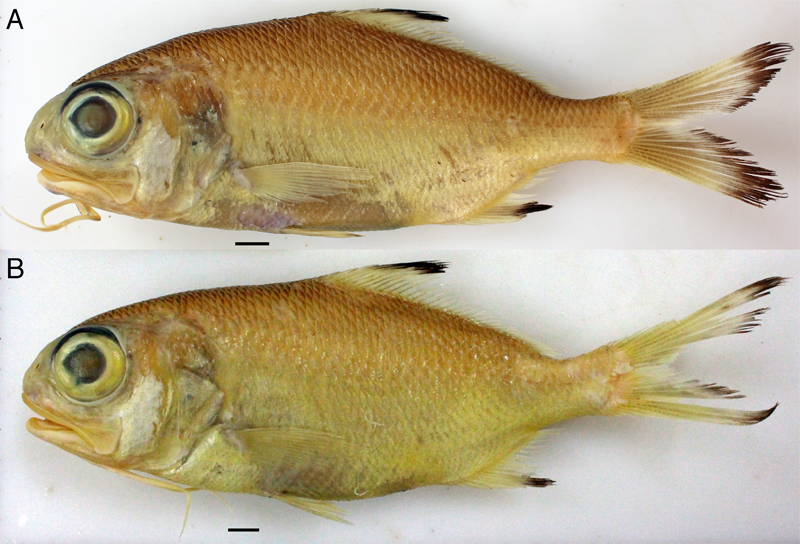Publication Highlights Bermuda Beardfish
A new publication describes a beardfish species, Polymixia hollisterae, living on Bermuda’s deep slope, and notes that there “are only 10 species of Polymixia known globally so it is remarkable we have three here.”
In a recent edition of the Envirotalk newsletter, Curator of the Natural History Museum Dr. Robbie Smith said, “Dr. Terry C. Grande, Loyola University Chicago and Dr. Mark V. H. Wilson, University of Alberta and Loyola University Chicago recently published a description of a beardfish species, Polymixia hollisterae, living on Bermuda’s deep slope, in the journal Ichthyology & Herpetology.
“The fish is a new species of the spiny-rayed fish genus Polymixia. It was initially identified as Polymixia lowei but careful re-assessment of the bones in the fin structures and new genetic data have revealed it to be distinct.The only other known specimen was caught in the Gulf of Mexico.
“Species of Polymixia have been called ‘living fossils’ because of their unusual retention of primitive features, and because Polymixia is the last survivor of a Cretaceous radiation of polymixiiform fishes, over 65 million years ago.
The type specimens of Polymixia hollisterae, new species, from Bermuda.
“The new species of the fish genus Polymixia in Bermuda is named in honor of Gloria Elaine Hollister [1900–1988] for her landmark contributions to deep-sea research and ichthyology. She was a key member of William Beebe’s Bathysphere Expeditions, on Nonsuch Island, in the 1930s which set world records for deep-sea descent and biological observations off Bermuda.
“Gloria set a record herself for deepest descent by a woman, which stood for decades. Hollister also described new species of fishes and she perfected a method for clearing fish specimens and staining their bones, allowing study of the skeleton through transparent flesh, a method still widely used with slight modification today.
“She was active in tropical jungle exploration in Guyana with Beebe, did pioneering work for the Red Cross Blood Bank during WWII, and was an advocate of land conservation with the Nature Conservancy.
“Dr. Grande and Dr. Wilson came to the Museum in 2018 to study the unusual fish, which had been caught in 1997 on a deep line off Eastern Blue Cut in 550 m [280 fathoms, 1600 feet] of water by Craig Soares and Richard Allen, who donated it to BAMZ.
“Another species of beardfish, P. lowei, has been caught several times on the deep slope off the South Shore and a single specimen of P. nobilis was caught on the slope of Challenger Bank by Bobby Doe in 1973. Dr. Wilson shared with me that his mother was born here and spent much of her early life in Bermuda and is a distant relative of Mr. Doe. There are only 10 species of Polymixia known globally so it is remarkable we have three here.
X-radiographs of the type specimens of Polymixia hollisterae, new species, from Bermuda
Tim Noyes and Dr. Leo Blanco-Bercial from BIOS commented on the discovery: “This new species documentation is very relevant to the new Darwin Plus project ‘Assessing the mobile fish biodiversity of Bermuda’s deep seas’. The project will be utilizing environmental DNA as one way of detecting deep-sea fishes.
“Having both taxonomic and genetic identification of a species are invaluable to maximizing the power of eDNA meta-barcoding, since these voucher specimens serve as a reference with which to validate the eDNA detections. These tools will help us more clearly understand the patterns of fish diversity on Bermuda’s deep reefs and the slope of our seamount.”
Dr. Tammy Warren, Senior Marine Resources Officer, added: “We need a clearer picture of the diversity of fishes in our deep water so that we can be more confident of our conservation and management strategies. This new information is relevant to the Bermuda Ocean Prosperity Programme, where good data on fish distribution patterns, including the work done by Tim and Leo, will help us formulate our new Marine Spatial Plan.”
The paper is available as open access here.
Read More About
Category: All, Environment




